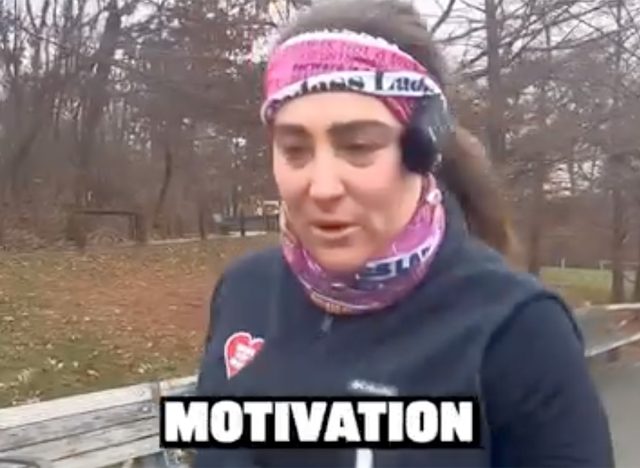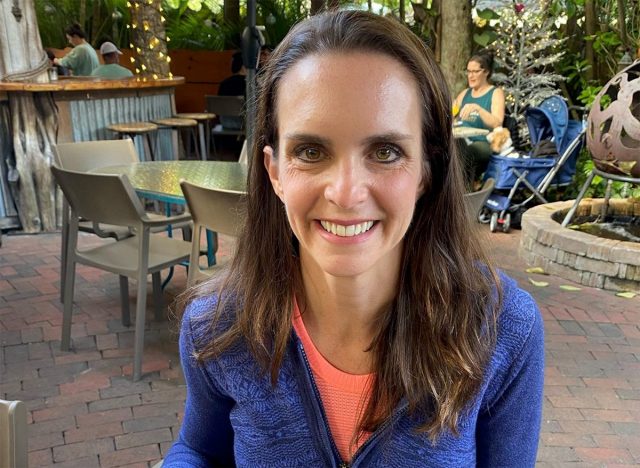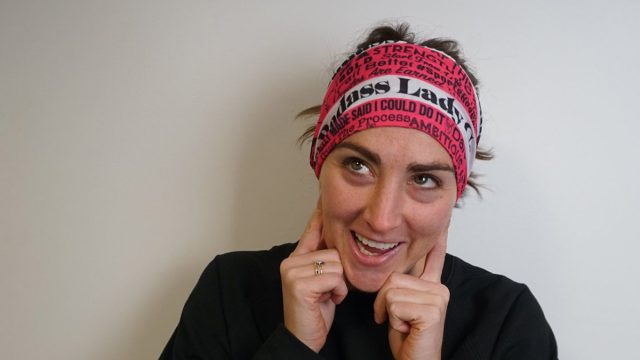Boost Your Run With Kelly Roberts' Secret to Endless Motivation
Are you struggling to motivate yourself to go on a run? You aren't alone, but there is an easy way to conquer it. Kelly Roberts is a running coach & running community founder @BadassLadyGang, an online running community. She regularly shares content on Instagram offering helpful tips on how to maximize your running workouts. In one recent Instagram video, Roberts discusses how self-motivation can be the key to success. "There's two forms of motivation," she says at the start of the clip. Here is everything you need to know to get yourself motivated for your next run – and what Body Network's Resident RDN, The Diet Diva, Tara Collingwood, MS, RDN, CSSD, LD/N, ACSM-CPT, a Board Certified Sports Dietitian, things of her suggestions.
Extrinsic Motivation

The first is external. "Extrinsic: Having a goal with an outcome, run a 5K, run your first mile, run a nine minute mile, run a 15 minute mile, run a half marathon. That's all extrinsic motivation and it gives us something to work towards, and we have all of these benchmarks on the way," she explains.
Intrinsic Motivation

The second is "inside, intrinsic," she says. "Intrinsic motivation is, I like running with my friends. I like how I feel. I love chasing goals. I love the way that it helps me work on what's going on in my personal life in a very low stakes way, right? If I can't PR my half marathon, nothing's really going to happen. Whereas if you really shoot for a big promotion, ask for a raise."
Running Is a "Very Fun Place" to Work on Yourself

"Weirdly everything that you learn about beliefs, what you say to yourself in moments of doubt and fear and hardship and running brings truth in your life," she continues. "It is a very fun place to kind of work on yourself in a way that doesn't feel like your world might fall apart. That's how you stay motivated."
RELATED: Jeff Nippard Shares 5-Point Checklist for Perfect Squats
She Also Recommends Journaling

In the post she elaborates on how to motivate yourself to run. "Define your motivating factors," she writes. "I'm big on journaling. Ask any of the athletes who are on the @badassladygang training team or who do one of my training experiences or running plans, there's a lot of journaling. Why? Because that's a piece of the puzzle that is SO important in running."
Here Are Some Journal Prompts

She also offered some "journal prompts to play with in your training" and "help with motivation"
- What are you working towards?
- What is your goal?
- What does accomplishing your goal say about you?
- What inspired you to chase this goal?
- What's the plan?
- How do you want to feel?
- What needs to happen to unlock those feelings?
- What needs to happen to make that goal a reality?
- Is that plan realistic given your work/life schedule?
- What obstacles stand in your way?
- What are tools and tactics you can use to work through them?
- Do you believe you will succeed?
- What does success look like?
- What does failure look like?
Collingwood Agrees That Intrinsic and Extrinsic Motivators Are Key

Collingwood loves the idea of extrinsic and intrinsic motivations to keep you going. "When runners have a goal like a race or a certain pace they want to run it is much easier to not skip runs or other workout sessions. Those extrinsic motivators can be very powerful," she says. Intrinsic is just as important and can also be quite motivating. "Maybe you are running to improve your physical health, mental health, emotional health, etc. Maybe you just love running! You love getting outside or watching a favorite show on your iPad on the treadmill," she says.
Related: This Is Exactly How to Lose Body Fat This Year
She Is Also On Board with Journaling

"Journaling can be an excellent way to work on motivations, especially with some of the prompts provided here," Collingwood adds. "Really think about why you want to do it, what you will gain, obstacles you have to overcome, make a plan, and also think about how you can reward yourself along the way."
💪🔥Body Booster: Before your next run or walk, come up with a few intrinsic and extrinsic motivators.





